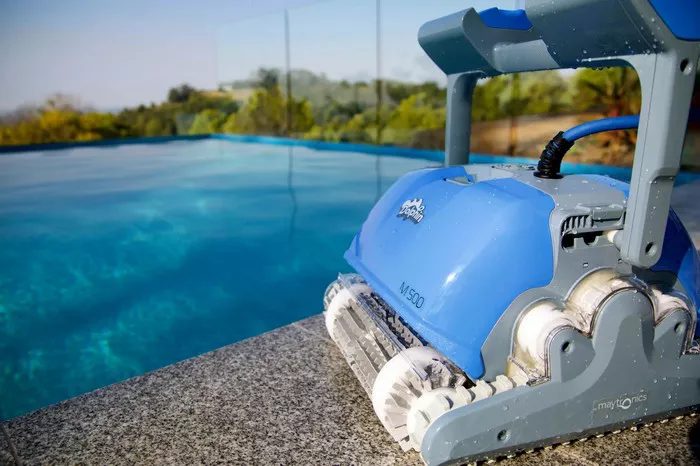Robotic pool cleaners have revolutionized the way we maintain our swimming pools, offering convenience and efficiency. However, like any technology, they come with their own set of drawbacks that users need to consider. In this comprehensive guide, we delve into the disadvantages of robotic pool cleaners, focusing on meeting user needs.
High Initial Cost
Investing in a robotic pool cleaner often requires a significant upfront investment compared to other types of pool cleaners. While manual or suction-side cleaners may have a lower initial cost, robotic cleaners typically come with advanced features and technology, driving up the price.
Moreover, the initial cost includes not only the purchase of the robotic cleaner itself but also any additional accessories or maintenance tools that may be necessary for optimal performance. This high initial cost can be a deterrent for some pool owners, especially those on a tight budget.
Limited Mobility
One of the primary drawbacks of robotic pool cleaners is their limited mobility, mainly due to the power cable tethering them to a power source. The length of the power cable dictates the cleaning range of the robotic cleaner, which can be restrictive, especially for larger or irregularly shaped pools.
This limitation in mobility can impact the efficiency of pool cleaning, as the robotic cleaner may not be able to reach all areas of the pool within a single cleaning cycle. Pool owners may need to manually reposition the cleaner or invest in additional extension cords to overcome this limitation, adding to the overall cost and complexity of using the device.
Debris Capacity
Another consideration when using robotic pool cleaners is their limited debris capacity. While robotic cleaners are equipped with onboard filters or debris bags to capture dirt and debris, these compartments have a finite capacity and need to be emptied regularly during cleaning sessions.
For pools with heavy debris accumulation, such as leaves or twigs, the cleaner may require frequent emptying, disrupting the cleaning process and requiring additional user intervention. This limitation in debris capacity can be particularly problematic for pool owners who prefer less hands-on maintenance.
Maintenance and Repairs
Like any mechanical device, robotic pool cleaners require regular maintenance to ensure optimal performance and longevity. This maintenance typically includes cleaning the filter or debris bag, inspecting and cleaning the brushes, and checking for any signs of wear or damage.
Additionally, robotic cleaners are susceptible to malfunctions or breakdowns, which may require repairs or replacement parts. Common issues include jammed brushes, malfunctioning motors, or damaged cables. The cost of repairs can vary depending on the extent of the damage and whether the device is under warranty, adding to the overall cost of ownership.
Handling and Weight
Robotic pool cleaners are generally heavier and bulkier than other types of cleaners, which can make handling and maneuvering them more challenging, especially during installation and removal from the pool. The weight of the device can also affect its ability to climb walls or navigate obstacles effectively.
Pool owners with physical limitations may find it particularly challenging to handle and maneuver robotic cleaners, potentially limiting their usability. Additionally, storing the cleaner when not in use can be cumbersome due to its size and weight, requiring adequate storage space.
Inability to Collect Floating Debris
One notable limitation of robotic pool cleaners is their inability to effectively collect floating debris from the surface of the water. While robotic cleaners excel at vacuuming the pool floor and walls, they are not designed to skim the surface for leaves, insects, or other floating debris.
Pool owners may need to supplement the cleaning routine with additional tools, such as a skimmer or surface cleaner, to remove floating debris manually. This extra step adds time and effort to the maintenance process, detracting from the convenience offered by robotic cleaners.
Additional Accessories
Depending on the specific model and the requirements of the pool, users may need to invest in additional accessories to enhance the performance of their robotic pool cleaner. These accessories can include extra filter cartridges or bags, replacement brushes or tracks, or specialty cleaning attachments for tackling specific types of debris or pool surfaces.
While these accessories can improve the effectiveness and versatility of the robotic cleaner, they also add to the overall cost of ownership. Pool owners should carefully consider their cleaning needs and budget when purchasing additional accessories for their robotic pool cleaner.
Conclusion
In conclusion, while robotic pool cleaners offer numerous benefits in terms of convenience and efficiency, they also come with their own set of drawbacks that users need to consider. From high initial costs and limited mobility to debris capacity and maintenance requirements, understanding these disadvantages is essential for making informed decisions about pool maintenance solutions. By weighing the pros and cons, pool owners can determine whether a robotic cleaner is the right choice for their needs and budget.

